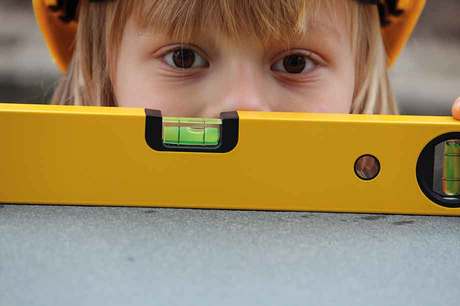
One of the joys of childhood is being able to dress up in ridiculous outfits and pretend to be someone else. Dressing up is not only great fun for children, but it also has many developmental benefits, and is an easy activity to provide for at home.
FIVE THINGS YOU NEED TO KNOW
Here are five reasons why dressing up is so important for young children’s learning and development:
1. Developing language
While many two-year-olds love trying on shoes and hats, this type of play really comes into its own from about three years. At this age, children are using language so this allows them to repeat what they have heard and also to talk as if they were someone else. You may even find your child talking with an American accent if they are a fan of series or films such as Frozen.
Interestingly, you may also spot that your child talks even when alone. The high level of language that children use when dressing up means that it is great way for them to practise their communication and language skills.
2. Understanding roles
Children also use dressing up as a way of seeing what it is like to be someone else. Your child may at times pretend to be you, or someone else who is influential in their lives such as their early years teacher or practitioner. At other times, they may want to explore being a superhero, animal or even a baby. The term ‘role play’ is used when children play in this way.
Watch out also for the way that your child may mix and match roles. One moment your child is pretending to be a dog and a few minutes later has taken on the role of a doctor or nurse.
3. Being social
Dressing up is also a wonderful way for children to play together. It is also one of those activities where very young children can play alongside older children. And there are additional benefits of children dressing up together. Children learn to co-operate, listen to each other and take turns. At times children will also explore the dynamics of relationships that they see. This means they may play out being a child and a parent or being a teacher and a child.
4. Exploring gender
From around three years, children are really starting to explore what it means to be a boy or a girl. As part of this exploration, it is typical for children to want to dress up in gender-affirming roles – for example, girls wanting to be princesses or boys wanting to be a firefighter. It is equally normal for children to try out being the opposite sex. Boys may want to wear a dress and put on high heels, while girls may want to don a hard hat.
5. Developing skills
As well as the language and emotional benefits, dressing up can also encourage children to improve their dressing skills. This may not seem important, but if your child is about to start Reception class, it is essential that they can get changed quickly and independently. The great thing about dressing up is that children are highly motivated and so can quickly learn how to manage fastenings.
HOW TO MAKE THE MOST OF ROLE PLAY
There are many ways that you can help your child to enjoy dressing up at home.
Create a dressing-up box
You do not have to buy any outfits for your child to enjoy dressing up. Indeed, buying custom-made outfits can cramp children’s style as it forces them into a particular role. Instead, think about putting some props such as hats, shoes and bags into a box. Look out also for some adult garments such as shirts, skirts and waistcoats. Cut down the sleeve length or shorten them, but don’t worry about things not fitting. Indeed, children often prefer items that are clearly from the adult world.
Explore specific roles
Some children clearly want to explore certain roles when they play. You may spot that they take their ‘sick’ cuddly toys and nurse them or they seem keen to use a spoon as a hammer or spanner. If you see that there is a pattern to this play, you might like to provide a few specific props that will help your child develop their role play, but if you cannot afford to do this, don’t worry as children are great inventors.
To help your child to explore specific jobs more accurately, though, you might like to look out for books about these roles. This can enhance children’s play while also developing their vocabulary.
Join in
Many children love their parents joining in with their play. You can do this by asking your child if you can play alongside them. See what they want you to be and also, if you have an older child, what they want you to do and say. It may be that your child has a s pecific plan for their play. While this may seem as if they are being bossy, it is a very positive developmental sign. It means that your child is planning and thinking ahead. They key is for you to go with the flow.
pecific plan for their play. While this may seem as if they are being bossy, it is a very positive developmental sign. It means that your child is planning and thinking ahead. They key is for you to go with the flow.
Don’t over-react
Finally, we have seen that exploring gender is often part of this type of play. Research indicates that some parents find it very hard to watch as their child dons clothes designed for the opposite sex, especially when it comes to boys. Over-reacting or preventing children from cross-dressing is not helpful, though, as children may develop feelings of guilt or shame. The reality is that most children will cross-dress at some point and there is no evidence suggesting that it will in any way affect their later sexuality.









